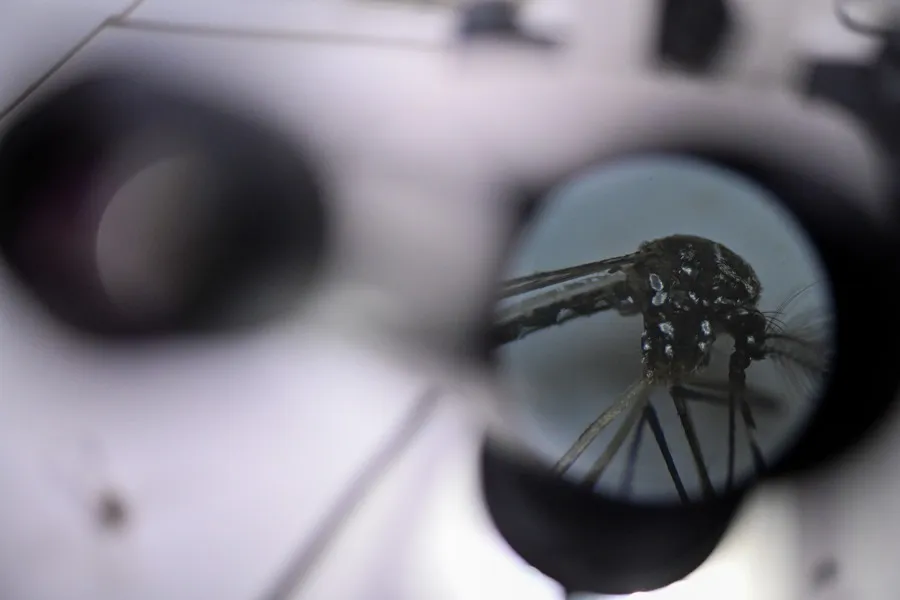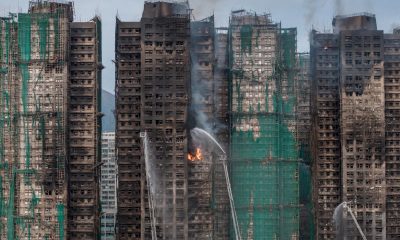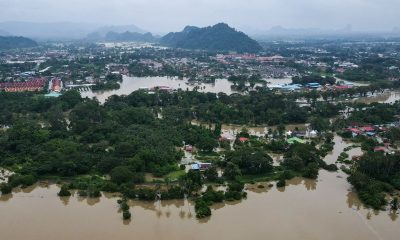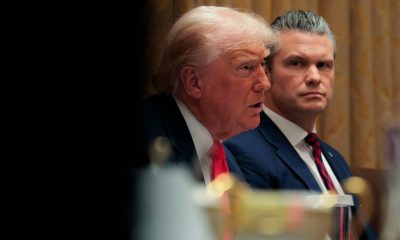International
Dengue will cover virtually all of Brazil and Mexico by 2039, according to a study

America is the continent most affected by dengue, with 8.1 million cases, and the situation will worsen in the coming years, according to a report that predicts that the infection will spread by 2039 to the practice the entire territory of Brazil and Mexico, the two largest countries in Latin America.
The research, published in the journal Nature Communications and in which scientists from Canada, the United Kingdom, Australia, the United States, Brazil and Mexico collaborated, predicts that by 2039 97% of the localities in Brazil will be affected by dengue, while in Mexico the figure will be 81%.
The analysis predicts that in Mexico the expansion of dengue will be mainly in the interior of the country, in the highest altitude areas of the central plateau.
The study estimates that the area of Tijuana, on the border with the United States, will be invaded between 2027 and 2030, and the area of Mexico City, between 2038 and 2039.
In Brazil, most of the areas invaded in the coming years will be in the south.
The situation is already alarming, according to experts from the Pan American Health Organization (PAHO) who met at the end of May in Washington, because so far this year, there are already three times more documented cases than the cases recorded in the same period of 2023. The deaths stand at 3,600.
The international team of researchers pointed out in their study that the spread of dengue, a febrile disease that is transmitted by the bite of a mosquito (Aedes aegypti) and that can cause difficulty breathing, severe bleeding and organ complications, will accelerate in the coming years due to the climate crisis and the greater mobility of the population.
The researchers used for the first time machine learning technology (known by artificial intelligence) to understand how the connection between areas and environmental conditions interact at the different stages of the infection, one of the scientists who participated in the study, Vinyas Harish, of the University of Toronto (Canada), told EFE.
“Many people have investigated environmental factors such as temperature, humidity, rain, to establish the relationship between those characteristics and mosquitoes,” Harish said.
“But to really understand how dengue affects the population, we needed to integrate that with data on the population’s mobility over time. We use machine learning to integrate those perspectives,” he added.
The data that the team used come from more than 8,000 municipalities in Brazil and Mexico during the past 25 years along with climate information, records of the appearance of epidemics and the history of genetic evolution.
In 1996, only 16 municipalities in Mexico (0.65% of the country’s total) were affected by dengue infection. But between 2000 and 2010, the infection expanded to 965 municipalities and by the end of 2019 the figure reached 1,350, 55% of the total.
In Brazil, the growth was similar. In 2001, dengue was only present in two states and 549 municipalities (9.96%). By 2019, the figure had exploded to 4,299 municipalities, 76.8%.
According to PAHO, there is no specific medicine to treat dengue, whose infection can occur without symptoms, or can be evidenced with symptoms ranging from a moderate fever to a high and incapacitating fever, headaches, muscle aches and rashes.
But Harish was optimistic since the conclusions of the study will allow the authorities to adopt preventive measures.
“From simple interventions, such as increasing awareness among the population to avoid the bites of these mosquitoes, to more complex, such as research on vaccines or mosquito replacement techniques,” he concluded.
International
El Chapo’s son Joaquín Guzmán López pleads guilty to U.S. drug trafficking charges

Joaquín Guzmán López, one of the sons of notorious Mexican drug lord Joaquín “El Chapo” Guzmán, pleaded guilty on Monday to drug trafficking charges in a U.S. court, months after his brother Ovidio reached a similar plea agreement, according to local media reports.
The defendant appeared before a federal court in Chicago early Monday afternoon and changed his previous plea in the case, the Chicago Tribune reported. U.S. authorities accuse him of forming, together with his three brothers, the cartel faction known as “Los Chapitos.”
The group is believed to have continued the operations of El Chapo, who has been serving a life sentence in the United States since 2019.
Guzmán López, 39, was arrested after landing in Texas in a small aircraft alongside cartel co-founder Ismael “El Mayo” Zambada.
International
Venezuela authorizes return flights as U.S. continues deportations amid rising tensions

The arrival of U.S. aircraft carrying undocumented Venezuelan migrants continued regularly despite rising tensions between Washington and Caracas over President Donald Trump’s military deployment in the Caribbean.
Trump maintains that the deployment is part of an anti-narcotics operation, while Venezuelan President Nicolás Maduro insists the true objective is to remove him from power and seize the nation’s oil resources.
Venezuela’s aviation authority has “received a request from the United States government to resume repatriation flights for Venezuelan migrants from that country to Venezuela,” the Ministry of Transportation said in a statement .
“Under the instructions of President Nicolás Maduro, authorization has been granted for these aircraft to enter our airspace,” it added.
Caracas will permit two Eastern Airlines flights to land on Wednesday and Friday.
Migration remains one of the Trump administration’s flagship issues. On Monday, the U.S. president held a meeting with his National Security Council to discuss the situation in Venezuela, a day after confirming he had spoken with Maduro by phone, without offering further details.
According to the Venezuelan government, roughly 75 deportation flights have been carried out this year, returning at least 13,956 Venezuelans from the United States.
International
20,000 rounds stolen from german army after driver leaves cargo unattended

The German army confirmed the theft of a shipment of ammunition that occurred a week ago while it was being transported by a civilian delivery driver, a military spokesperson told AFP, confirming earlier media reports.
According to Der Spiegel and the regional broadcaster MDR, around 20,000 rounds of ammunition were stolen from an unguarded parking lot near Magdeburg, in eastern Germany, while the driver was asleep in a nearby hotel. No information has been released regarding the identity of the suspects, and the military declined to specify the exact type or amount of ammunition taken.
Authorities have also not indicated how the perpetrators knew the cargo would be left unattended.
“The theft was discovered upon delivery at the barracks,” the German army spokesperson said.
A police spokeswoman confirmed to AFP that an investigation has been opened but refused to provide further details “for tactical reasons.”
Sources close to the German military, cited by Der Spiegel, believe it is unlikely the theft was a coincidence. They suspect the thieves waited for the driver to stop for the night before striking.
Der Spiegel also reported that the Defense Ministry normally requires two drivers for this type of transport to ensure the cargo is constantly monitored. However, in this case only one driver was assigned, meaning the civilian transport company failed to comply with the security protocols.
-

 Central America4 days ago
Central America4 days agoTrump Pardons Former Honduran President Hernández and Warns of Aid Cuts Ahead of Election
-

 Central America2 days ago
Central America2 days agoHonduras Extends Voting by One Hour Amid High Turnout, CNE Announces
-

 International1 day ago
International1 day agoHong Kong police arrest 13 over deadly high-rise fire that killed 151
-

 Central America3 days ago
Central America3 days agoHonduras’ China–Taiwan Future Hinges on Sunday’s Presidential Election
-

 International4 days ago
International4 days agoMeta Says Russia Seeks to Ban WhatsApp for Defending Secure Communication
-

 International1 day ago
International1 day agoSri Lanka and Indonesia deploy military as deadly asian floods kill over 1,000
-

 International1 day ago
International1 day agoTrump says asylum decision freeze will remain in place “for a long time”
-

 International1 day ago
International1 day agoChile enters runoff campaign with Kast leading and Jara seeking a last-minute comeback
-

 International2 hours ago
International2 hours agoVenezuela authorizes return flights as U.S. continues deportations amid rising tensions
-

 International2 hours ago
International2 hours agoEl Chapo’s son Joaquín Guzmán López pleads guilty to U.S. drug trafficking charges
-

 International2 hours ago
International2 hours agoTrump convenes National Security Council as U.S.–Venezuela tensions intensify
-

 International2 hours ago
International2 hours ago20,000 rounds stolen from german army after driver leaves cargo unattended






























